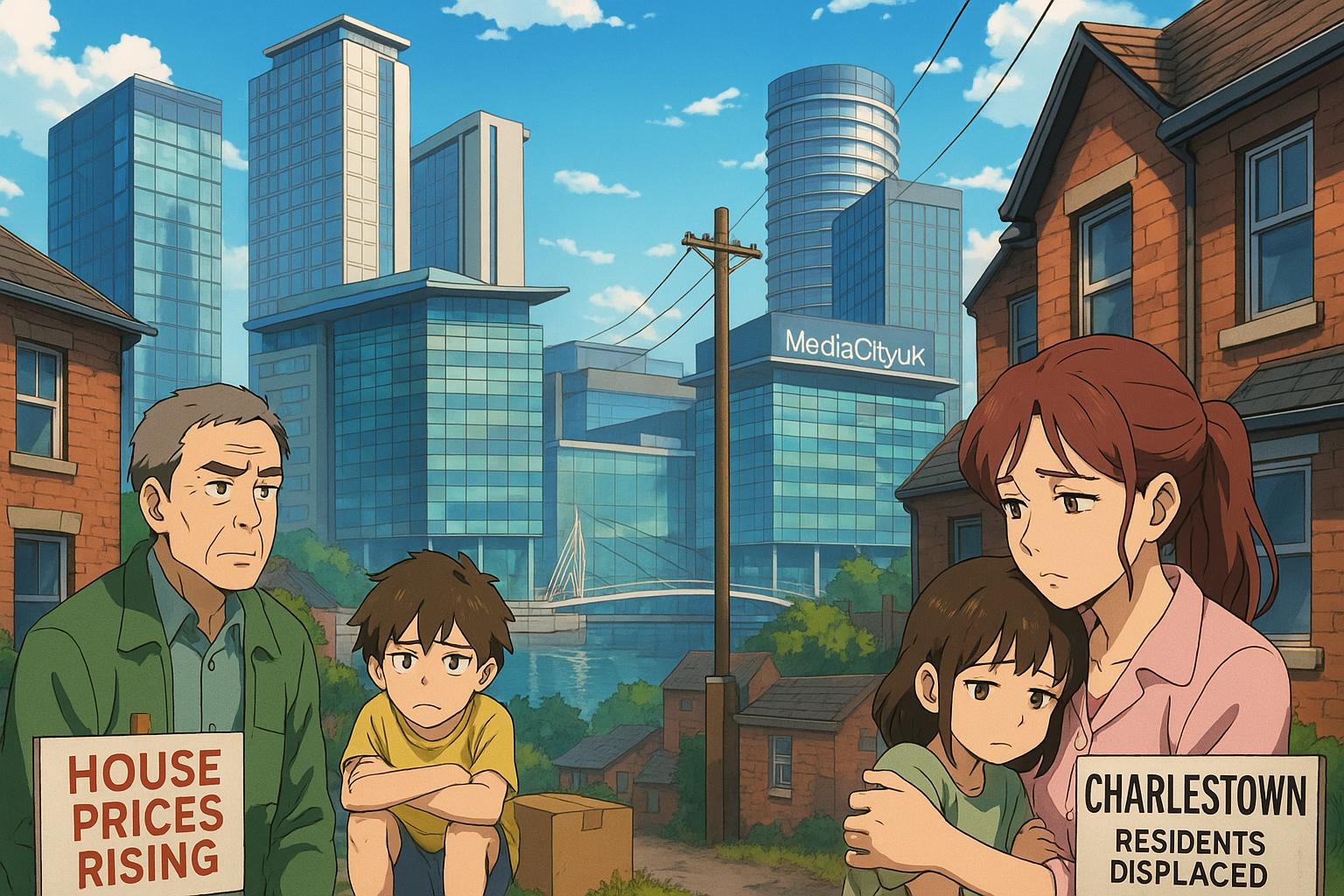Charlestown, a suburb near Salford in Greater Manchester, has recently been identified as the most gentrified area in England and Wales. This finding comes from comprehensive research conducted by The Telegraph, which evaluated various gentrification metrics including education levels, income, house prices, and local amenities over the past decade. The transformation of Charlestown is striking; house prices have nearly tripled, soaring from £73,000 to £212,000. Meanwhile, residents' earnings have risen by almost 50%, and the proportion of university-educated residents has steadily increased.
Central to Charlestown’s revitalisation has been the development of MediaCityUK at Salford Quays, which has not only created a wealth of job opportunities—over 10,000, in fact—but has also significantly improved local infrastructure. Paul Swinney, a prominent figure at the Centre for Cities think tank, notes that an abundance of brownfield sites in Salford has allowed for new residential developments where none existed before. However, such progress comes at a serious cost. Gentrification often leads to the displacement of long-standing residents, many of whom find themselves priced out of their own neighbourhoods as new inhabitants arrive, lured by the area’s rejuvenated prospects.
The extent of this gentrification extends beyond Charlestown, as data shows that an astonishing 17 of the 20 most gentrified wards in England and Wales are located within Manchester and Salford. This underscores a troubling trend where peripheral boroughs are neglected in favour of concentrated development in central areas. Critics of the so-called 'Manchester model' of urban regeneration argue that it disproportionately favours developers at the expense of local communities. Calls for more public investment in affordable housing and community-focused urban development have grown louder, as the need for equitable solutions becomes ever more urgent.
A closer look at the statistics reveals that Manchester has experienced the largest increase in house prices in England and Wales since the year 2000, with prices skyrocketing by an eye-watering 481% from £41,625 to £241,956. This surge can largely be attributed to a decade-long regeneration agenda that has transformed Manchester into a vibrant hub, particularly following the establishment of MediaCityUK. This development has not just transformed the local economy; it has attracted a flood of professionals seeking high-quality housing, consequently driving demand and property values even higher.
Indeed, Manchester's recent development projects, including MediaCityUK and the Northern Gateway, have catalysed significant changes in property values across the region. As these projects foster a thriving environment for media, technology, and the creative industries, the influx of investment continues to reshape the urban landscape. While these changes bring vibrancy and opportunity, the realities of escalating property values pose ongoing challenges that beg critical examination.
As Charlestown and similar communities navigate the complexities of gentrification, the balance between regeneration and the displacement of long-term residents remains a pressing concern. Reimagining urban development to be more inclusive and equitable could be essential for ensuring that the benefits of such transformations are shared broadly, rather than concentrated in the hands of a few.
Reference Map
- Paragraph 1: Sources [1], [4], [5]
- Paragraph 2: Sources [1], [3], [2]
- Paragraph 3: Sources [3], [6]
- Paragraph 4: Sources [4], [7]
- Paragraph 5: Sources [6], [2]
Source: Noah Wire Services
